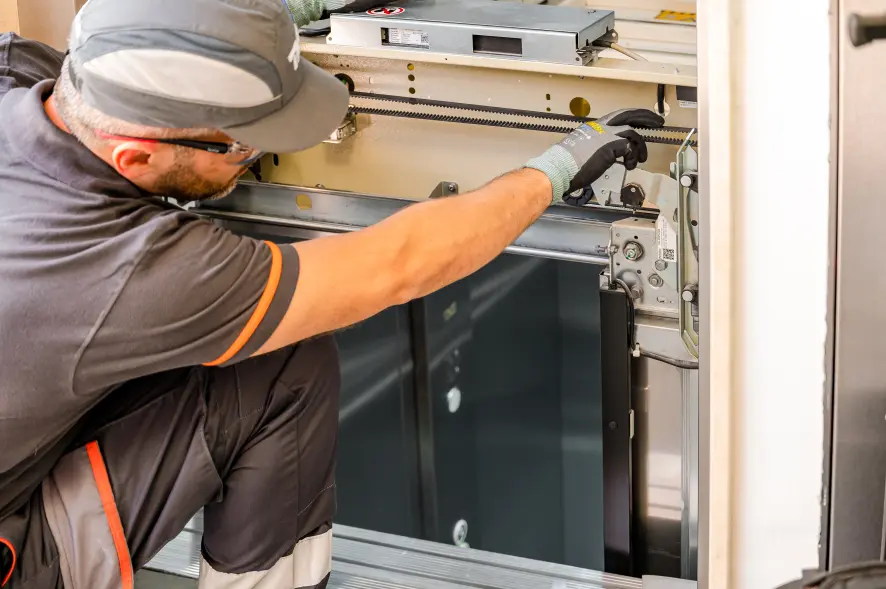Fixing Tips for Common Issues With Handicapped Platform Lifts
When it comes to making certain the smooth procedure of impaired system lifts, encountering usual concerns can interfere with the capability and access they supply. From power supply problems to control board malfunctions, these obstacles can hinder the lift's performance and concession safety - disabled platform lift. Recognizing exactly how to fix these concerns effectively is vital in maintaining the reliability and efficiency of these essential tools. Let's explore some practical ideas to attend to these usual issues and guarantee the appropriate performance of impaired platform lifts.
Power Supply Issues
When coming across power supply issues with impaired platform lifts, the first action is to methodically analyze and troubleshoot potential sources of power disturbance. If the power source is validated to be functioning, continue to inspect the power cable for any indicators of damage or wear that can be triggering a disruption in the power supply.

Control Board Issues
Control panel breakdowns on impaired system lifts can dramatically hamper their functional performance and present safety dangers to users. The control board functions as the main user interface for running the lift, enabling customers to initiate activity, control rate, and take care of stops at different degrees. When the control panel runs into issues such as less competent buttons, unpredictable behavior, or screen breakdowns, it can interrupt the whole lift procedure.
One typical issue with control board is electric mistakes, which may arise from circuitry concerns, power surges, or component damage. These faults can trigger the control panel to breakdown or end up being unresponsive, making it tough for individuals to run the lift securely. Additionally, environmental factors like moisture or severe temperatures can likewise impact the control panel's performance, bring about prospective failures.
To attend to control panel problems successfully, routine maintenance checks and assessments are crucial. Frequently cleansing the control board, evaluating wiring links, and making sure proper calibration can aid stop breakdowns and make sure the lift operates smoothly. In situations of consistent concerns, consulting a certified technician for repairs or substitutes is suggested to keep the lift's capability and safety for users.

System Stuck or Jammed
In scenarios where the impaired system lift experiences a platform stuck or jammed, immediate focus and appropriate troubleshooting are critical to ensure the lift's capability and customer safety. When experiencing a system that is stuck or obstructed, the initial step is to quit any recurring procedure of the lift to protect against additional damage or safety and security dangers.
After identifying and getting rid of any blockages, effort to by hand relocate the system to read the article see if it frees up. If manual efforts are not successful, abstain from making use of excessive pressure as this can trigger damage to the lift device. In such instances, it is recommended to contact a licensed technician or the lift maker for professional support in settling the concern. Trigger and proper resolution of a stuck or obstructed system is important to preserve the lift's operational efficiency and make sure user security.
Security Sensing Unit Breakdowns
A vital part of impaired system lifts, safety and security sensors play an important duty in making certain user defense and lift operation. If fixing the sensing units does not solve the issue, seek advice from a certified professional to perform a comprehensive assessment and fixing to maintain the lift's security and capability. Routine maintenance and prompt resolution of safety sensing unit malfunctions are important for the secure operation of disabled platform lifts.
Unusual Sounds or Motions
When operating a handicapped system lift, being attentive to any kind of unusual noises or movements is crucial for identifying possible concerns that may affect its efficiency and safety and security. Uncommon official statement sounds, such as grinding, screeching, or clunking noises, could indicate problems with the lift's mechanical parts, such as worn-out gears, loose screws, or damaged bearings. These issues, if left unaddressed, might lead to breakdowns and even complete break down of the lift.
In a similar way, unusual activities of the platform, such as jerking, shaking, or unforeseen stops, should not be disregarded (lift modernization). These activities could be an indication of electric concerns, hydraulic system problems, or irregularities in the lift's programming. Quickly exploring and attending to these unusual movements can protect against crashes and make sure the ongoing risk-free operation of the system lift
In case of experiencing unusual noises or motions, it is a good idea content to stop making use of the lift quickly and speak to a qualified professional for evaluation and repairs. Normal upkeep and prompt troubleshooting of any type of unusual indicators can assist prolong the lifespan of the impaired system lift and ensure the safety and security of its users.
Conclusion
To conclude, fixing common issues with disabled system lifts requires determining and attending to power supply troubles, control panel issues, system jams, safety sensor malfunctions, and unusual sounds or movements. By adhering to correct upkeep and fixing treatments, customers can make sure the safe and reliable operation of platform lifts for individuals with disabilities.